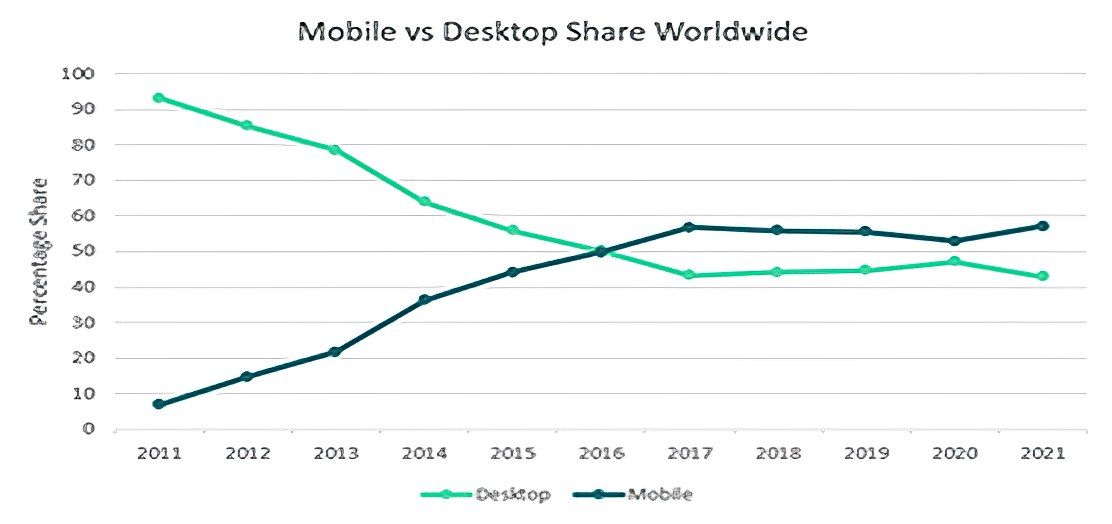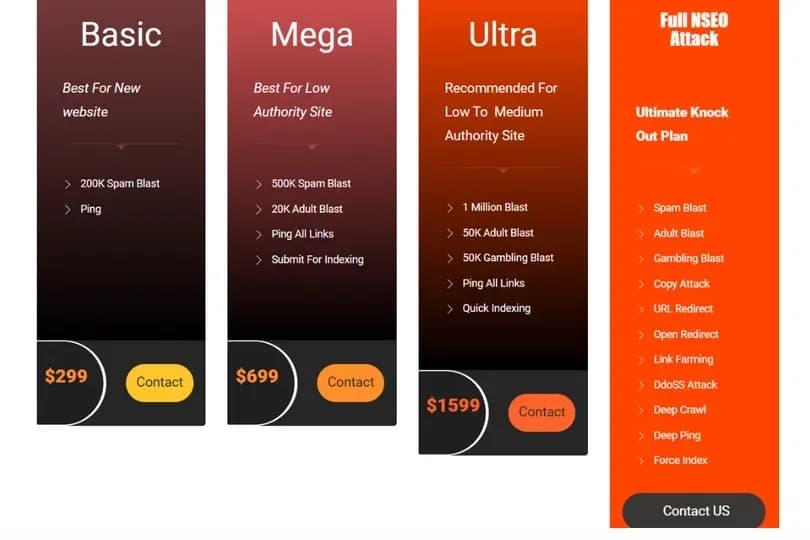When it comes to high-quality SEO strategies, the chicken and the egg arrived at the same time. Many website owners get stuck when deciding who they should please more: Google or their users. The simple truth here is that if your core focus is genuinely on hearing what consumers want, you’ll automatically also please the Google crawlers and algorithms.
And the message is clear: Users want ease of use when visiting your website from a mobile device.
Mobile SEO and e-commerce were alive and kicking long before the Covid-19 virus forced our economical hand in putting increased focus on Mobile SEO for business websites. As you can see in the graph below, mobile searches overtook desktop searches back in 2016 already.
But, when the Internet became one of the few means of communicating with our family, friends, and customers, users fully embraced the mobile power devices held. It keeps consumers connected to everything they hold dear – personally and economically.
2020 further tipped the economic scale from physical to digital sales and communication, and the gap between mobile and desktop searches is now growing more rapidly than before. Today, 60% of all online searches by users are done from mobile devices.

Of course, Google and other major search engines were years ahead in predicting that the era of mobile search would arrive eventually. They have been paving the way for a majority mobile-friendly online experience for users since 2016 when they introduced their Mobile-First Indexing.
“As we noted earlier this year, today’s the day we begin globally rolling out our mobile-friendly update. We’re boosting the ranking of mobile-friendly pages on mobile search results. Now searchers can more easily find high-quality and relevant results where text is readable without tapping or zooming, tap targets are spaced appropriately, and the page avoids unplayable content or horizontal scrolling.”—Google, 2015.
This influential piece of code ensures that mobile-friendly websites get preference on their SERP. Followed by the Google Core Web Vitals update in July/August 2021—which gives preference to websites with optimal user experience metrics—website owners and the SEO industry quickly realised the utter necessity of creating mobile-friendly websites to gain and maintain visibility on Google.
To determine whether a website is mobile-friendly or not, Google uses a list of criteria that you can find on its official page. It includes:
- Size of the text
- Legibility of the content without zooming
- Sufficient spacing between links
- Large enough tap targets (They should work regardless of finger size)
- The site’s load speed
- Visible URL address bar
For SEO experts, optimising their client’s websites to reach mobile users has been at the forefront of new developments, and for those who know how to appease Google’s algorithms, their clients end up at the top on SERPs and thrive.
If you want your business to succeed in the mobile age, you must follow an expert Mobile SEO strategy. If you’re still on the fence about investing time and energy into this, you can keep reading to make an informed choice.
According to a recent Google study, more than 50% of mobile users abandon a website if it fails to load fast on their device. Many mobile websites take more than 7 seconds to load, which is not good enough.
The reality today is that if your website doesn’t load properly on a mobile device, then half of the people who visit your site will leave in a matter of seconds and never return. This translates to potentially 50% fewer leads or sales for your website per month.
If that sounds bleak, just know that it does not need to become your reality. Optimising your website for mobile is a one-off investment with a long-term positive impact and a very high ROI. Let’s look at it this way: If you don’t want to miss out on almost 50% of potential business, it’s time to up the ante and set some expert mobile optimisation in place for your website.
Mobile SEO best practices include:
- Improving your site’s load time according to the latest Core Web Vitals update.
- Integrating a responsive web design
- A Dynamic Serving setup where the server responds with different HTML (and CSS) on the same URL depending on which user agent requests the page (mobile, tablet, or desktop). It serves different code for each device but on the same URL.
- Separate URLs (option)
- Optimise for Local Search
- Optimise for Voice Search
- Structured data
- Use Google’s Mobile Usability test to understand the current mobile situation.
- Manually editing your code or using a CMS plug-in explicitly designed for this purpose. After choosing one of these options, you might have to test your site’s performance and optimise it as needed. However, there’s a chance the original version was already mobile-friendly, so you don’t need to do anything.
The time has come to stop putting mobile optimisation on the back burner and act. If you’re unsure where to start, let’s brainstorm a list of things you can do today to improve your mobile SEO strategy. Get in touch, and one of our senior team members will be happy to find customised mobile SEO solutions for your business.
Popular categories:
The Memorable Marketing by MediaGroup podcast series interviews leading senior marketers worldwide on all things marketing, campaigns, strategy, building awareness and everything that makes a brand successful.
Join the conversation by leaving your thoughts and questions, and we will be happy to chat with you. If you want to discuss your business marketing strategies in more detail or join our podcast as a guest, please reach out to us at: [email protected]
Latest Insights
Article
Negative SEO
Negative SEO is the malicious malpractice of attacking a competitor’s good standing with their audience and their hard-earned spot on the SERP. It is precisely what it says—the opposite of high-quality SEO obtained via Global SEO Services following good practices.
Written by Clarissa Siu
Quarterly marketing insights in our newsletter
We are committed to helping you get the best results in your digital marketing game. Our experts will give you actionable insights and knowledge, based on our experience, to tackle the biggest marketing challenges. Unsubscribe at any time.
Mediagroup Worldwide processes the above information in order to subscribe you to the newsletter. Privacy Policy
